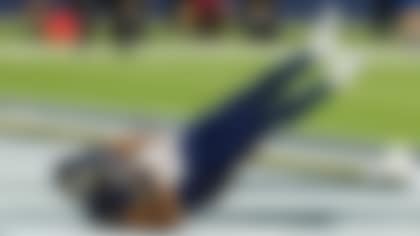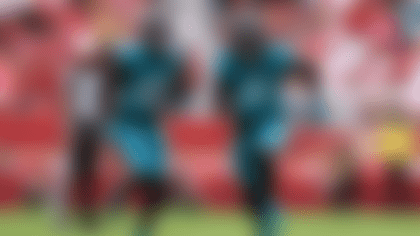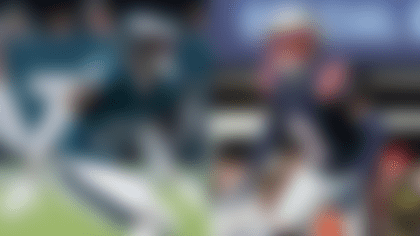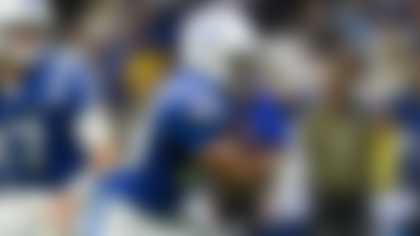It's that time of year again. A time when everyone -- ranging from professional football analysts to the most casual NFL fans -- tries to predict who will play in the Super Bowl.
Last year, I developed a mathematical model (Model V1.0) based on numerous statistics to predict which two of the 12 playoff teams would advance to Super Bowl 50. Although the model was created last year -- using data from 2004 to 2011 -- to test its efficacy, I ignored the known results of Super Bowls 47 through 49 (yes, I'm using Arabic numerals here, for clarity's sake -- sorry, Romans) and generated "predictions" to compare against what actually occurred. The model perfectly generated the matchups in Super Bowl 48 (Seahawks vs. Broncos) and Super Bowl 49 (Patriots-Seahawks), but it missed on Super Bowl 47 -- producing a matchup between the Patriots and Falcons, not the Harbaugh Bowl between the Ravens and 49ers that actually occured. Still, two out of three ain't bad. Just ask Meat Loaf.
So I put the model to use prior to last season's playoffs and predicted a Super Bowl 50 showdown in Santa Clara between ... the Cardinals and Bengals. This was proven incorrect, as the big game featured the Panthers and Broncos. And while the model's NFC prediction (Arizona) actually made it to Championship Sunday, the AFC pick (Cincinnati) continued its streak of one-and-dones.
Thus, I went back to the drawing board, investigating possible shortcomings in the model. And now I've developed a new and improved model for this season (Model V2.0). I again created the model using data from 2004 to 2011 and was able to:
1) Generate the correct matchups for Super Bowls 48 and 49.
2) Generate the correct matchups for Super Bowls 47 and 50, given secondary picks* for each conference. (A "secondary pick" is the next-best option generated by the model behind the primary pick. Since it's pretty tough to predict who will make it to the Super Bowl and we only have a small number to evaluate, rather than just checking how many primary picks a given model got right, it's useful to see if a model was *almost correct even when the primary pick was wrong.)
While model V1.0 was able to accomplish the first of those two feats, it's secondary picks were less accurate.
Without further ado, the V2.0 predictions based on the 2016 regular season are ...
[![internal-link-placeholder-0]](http://static.nfl.com/static/content/public/photo/2017/01/06/0ap3000000770557.jpg)
As with model V1.0 last year, model V2.0 results deviate from the exact playoff seeding and defy popular opinion (at least in the NFC). This time, the model predicts a Super Bowl XLIX rematch in Houston between the Patriots and Seahawks. Not bad, considering that was one of the most memorable Super Bowls ever. Especially for an undrafted rookie out of West Alabama by the name of Malcolm Butler.
Anyhow, for comparison's sake, here are the predictions of a simple model based only on the playoff seeding (Top Seed model):
[![internal-link-placeholder-0]](http://static.nfl.com/static/content/public/photo/2017/01/06/0ap3000000770629.jpg)
As you can see, there are some notable differences in the model predictions.
Model V2.0 incorporates many of the same metrics used in V1.0 -- metrics made available by Pro Football Reference like expected points contributed by the offense, simple rating system (or SRS) and offense simple rating system (OSRS).
In addition, after underestimating the 2015 Broncos' success with model V1.0, I decided to incorporate more statistics related to defense -- and to explicitly incorporate information about playoff seeding. In the past, the model only factored in win totals. But like we saw last season -- when the Broncos, Patriots and Bengals all finished at 12-4 -- numerous teams can have the same win total entering the postseason. Of course, that doesn't mean they're on equal footing, as seeding dictates byes and home-field advantage. Thus, in this kind of model, seeding is a more useful figure than win total.
Here is a comparison of the historical predictions from V2.0 and the Top Seed model:
[![internal-link-placeholder-0]](http://static.nfl.com/static/content/public/photo/2017/01/06/0ap3000000770561.jpg)
Interestingly, the simplistic Top Seed model has performed the best with its primary picks. Though, when the scope is expanded to include secondary picks, model V2.0 is the most accurate.
As with model V1.0, the same caveats apply with V2.0, in that it does not take into account any recent injuries or make significant adjustments for recent rule changes (e.g. longer PAT), because cumulative statistics over the seasons (going back to 2004) were used to make predictions. So, yeah, this new version of the model once again cannot account for major personnel setbacks: Notably, the Raiders (Derek Carr) and Dolphins (Ryan Tannehill) will be playing without their starting quarterbacks, while the Seahawks will be without All-Pro safety Earl Thomas and dynamic playmaker Tyler Lockett. And those are just a few of the impactful injuries among the 12 playoff participants.
If model V2.0 has properly accounted for the shortcomings of V1.0, we are likely to see another enticing showdown between Bill Belichick's bunch and Pete Carroll's crew. However, don't count out the Cowboys (led by their rookie sensations) or the Chiefs (who continue to find creative ways to score), as those two teams represent V2.0's secondary picks.
Nasir Bhanpuri, PhD, is a clinical informatics data scientist based in San Francisco. He has been applying analytics and modeling techniques to address challenges in a wide range of fields, including sports, healthcare, fitness, nutrition, music, education, neuroscience, and robotics.











